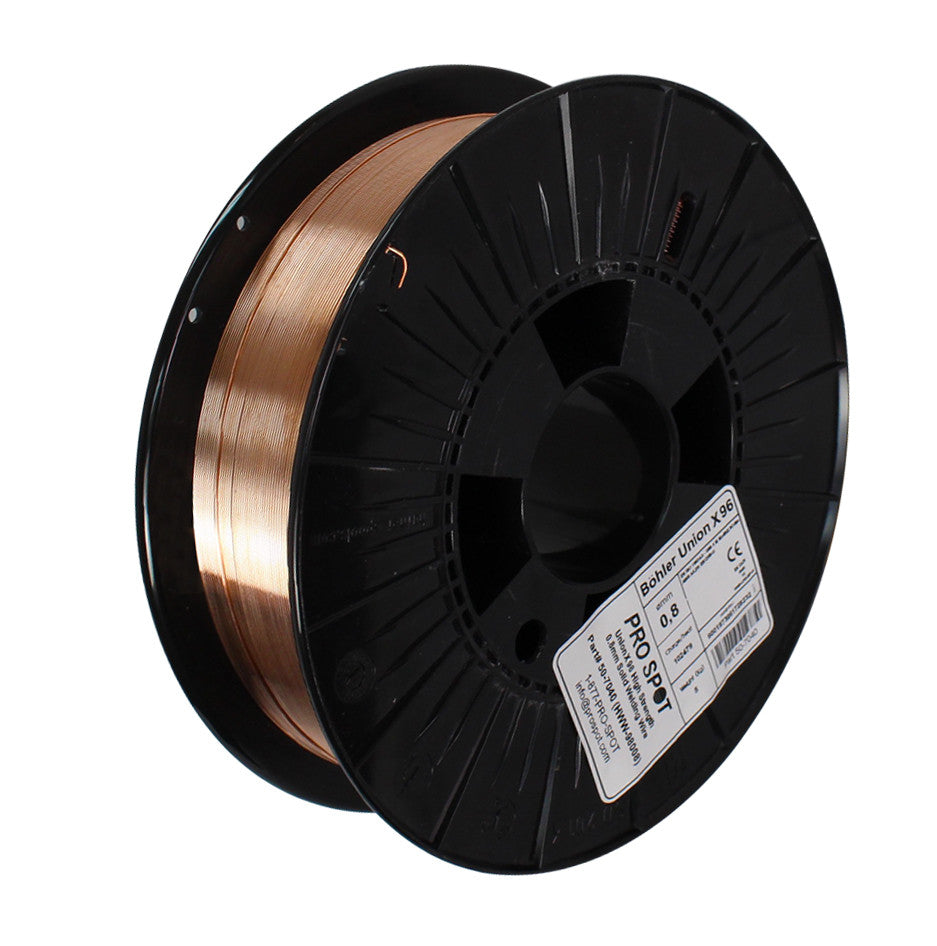Here is Information I found concerning ER70S wire.
May 22, 2019/
0 Comments/in
Blog /by
WELDER METALS
AWS A5.18 is the specification for carbon steel electrodes and rods for gas shielded arc welding like gas metal arc (GMAW), gas tungsten arc (GTAW) and plasma arc (PAW) welding, we all know class ER70S-2、ER70S-3、ER70S-4、ER70S-6、ER70S-7welding electrodes can be used for welding the carbon steel and the low alloy carbon steel with a strength less than 500Mpa, do you know what’s the difference between them?
Let’s see their chemical composition comparison firstly:
| AWS | C | Mn | Si | P | S | Ni | Cr | Mo | V | Cu | Ti | Zr | Al |
| ER70S-2 | 0.07 | 0.9-1.4 | 0.4-0.7 | 0.025 | 0.035 | 0.15 | 0.15 | 0.15 | 0.03 | 0.5 | 0.05-0.15 | 0.02-0.12 | 0.05-0.15 |
| ER70S-3 | 0.06-0.15 | 0.9-1.4 | 0.45-0.75 | 0.025 | 0.035 | 0.15 | 0.15 | 0.15 | 0.03 | 0.5 | / | / | / |
| ER70S-4 | 0.06-0.15 | 1.0-1.5 | 0.65-0.85 | 0.025 | 0.035 | 0.15 | 0.15 | 0.15 | 0.03 | 0.5 | / | / | / |
| ER70S-6 | 0.06-0.15 | 1.4-1.85 | 0.8-1.15 | 0.025 | 0.035 | 0.15 | 0.15 | 0.15 | 0.03 | 0.5 | / | / | / |
| ER70S-7 | 0.07-0.15 | 1.5-2.0 | 0.5-0.8 | 0.025 | 0.035 | 0.15 | 0.15 | 0.15 | 0.03 | 0.5 | / | / | / |
We can see that the main difference between them is the content of C, Mn and Si elements except for ER70S-2 welding wire. The content of Mn and Si will affect the welding metallurgical reaction and weld properties.
Secondly, their impact test requirements(As welded) differ:
| AWS A5.18(A5.18M) | Average impact strength(A5.18M), Min |
| ER70S-2(ER48S-2) | 20 ft.lb.at -20F (27J at -30℃) |
| ER70S-3(ER48S-3) | 20 ft.lb.at 0F (27J at -20℃) |
| ER70S-4(ER48S-4) | Not required |
| ER70S-6(ER48S-6) | 20 ft.lb.at -20F (27J at -30℃) |
| ER70S-7(ER48S-7) | 20 ft.lb.at -20F (27J at -30℃) |
As can be seen from the above table, ER70S-4 does not require impact toughness under welding state, and ER70S-3 has a weaker impact toughness requirement than ER70S-2, ER70S-6 and ER70S-7.
Thirdly, AWS 5.18 specified their different application scenarios:
ER70S-2 welding wire and filler wire are mainly used for single-pass welding of killed, semi-killed, and rimmed steels, as well as for some multi-pass welding applications. The addition of deoxidizer allows the filler metal to be used for welding steel with rust or dirt on the surface, but may damage the weld quality, depending on the surface conditions. It is widely used for high quality and high toughness GTAW welds, and is well suited for single-side welding without the need for root gas protection on the reverse side of the joint.
ER70S-3 welding wires and filler wires are suitable for single-pass and multi-pass welds. Typical base metal standards are usually the same as those applicable to the ER70S-2. ER70S-3 is the most widely used GMAW wire.
ER70S-4 wire and filler wire are suitable for the welding of steels whose conditions require that they provide more deoxidation capacity than ER70S-3 filler metal. Typical base metal standards are usually the same as ER70S-2. No impact test is required.
ER70S-6 welding wire and filler wire are suitable for both single pass and multi-pass welding. They are particularly suitable for sheet metal where smooth weld passes are expected and for section and sheet steel with moderate amounts of rust or hot rolled scale. These wires allow for higher current ranges when welding with a CO2 shielded gas or a mixture of argon and oxygen or argon and carbon dioxide. Typically, the base material used is the same as ER70S-2.
ER70S-7 welding wire and filler wire are suitable for single-pass and multi-pass welding. They can be welded at higher moving speeds compared to ER70S-3 filler metals. They also provide some better wetting and bead shaping than those of filler metals. These wires allow for a higher current range when welding with a CO2 shielded gas or a mixture of argon and oxygen or argon and carbon dioxide. Base metal standards are usually the same as ER70S-2.
Currently,
ER70S-6 is the most consumed electrode and filler metal, there was followed by ER70S-3, with less use of other wires. ER70S-3 is applied in the automotive, construction or machinery industry, and ER70S-4 is mainly used in places where low requirements are needed such as bicycle welding.



